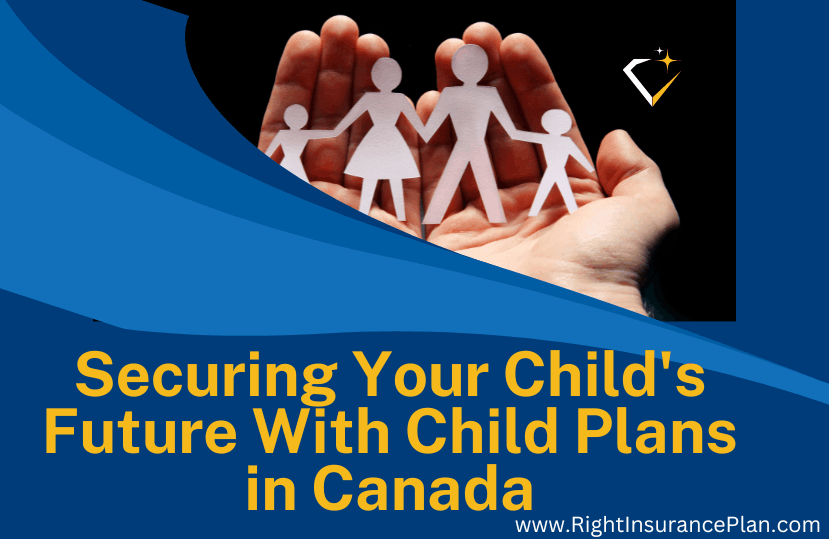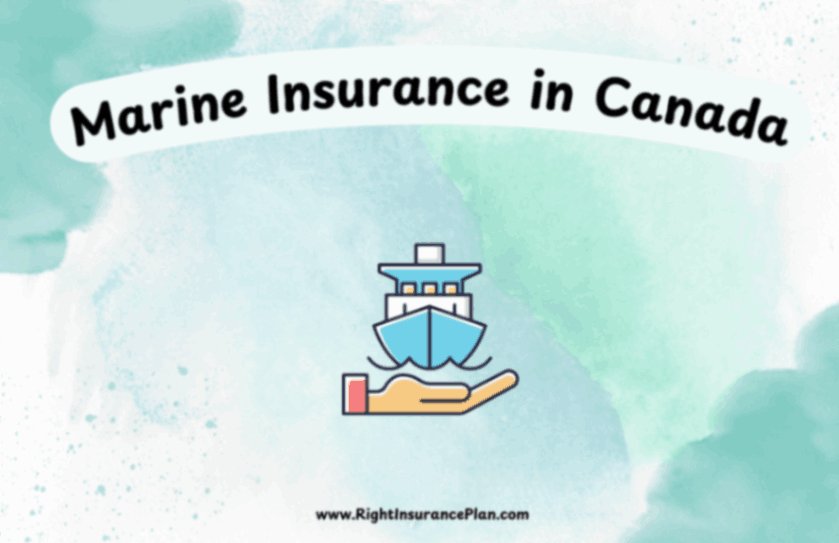
Securing Your Child's Future With Child Plans in Canada
As parents, we all desire the best possible future for our children. In Canada, there are several financial tools and government programs designed to help families save for their children's education and future needs. This blog post will explore the various child plans available in Canada, their benefits, and how to make the most of them.
1. Registered Education Savings Plan (RESP)
The Registered Education Savings Plan (RESP) is one of the most popular and effective child plans in Canada. It's a tax-sheltered savings account specifically designed to help parents save for their children's post-secondary education.
Key features of RESPs:
a) Government grants: The Canadian government offers the Canada Education Savings Grant (CESG), which matches 20% of your annual contributions up to a maximum of $500 per year and $7,200 lifetime per child.
b) Tax-deferred growth: Investment earnings grow tax-free within the RESP until withdrawal.
c) Flexibility: Funds can be used for various post-secondary education expenses, including tuition, books, and living costs.
d) Contribution limits: While there's no annual contribution limit, there's a lifetime limit of $50,000 per beneficiary.
According to the latest data from Statistics Canada, approximately 52% of Canadian children under 18 had an RESP. The median value of these accounts was $12,500, showing a significant increase from previous years.
To maximize the benefits of an RESP:
- Begin early to capitalize on compound growth
- Contribute regularly to maximize government grants
- Consider a family plan if you have multiple children
- Explore different investment options within the RESP
2. Canada Child Benefit (CCB)
While not a savings plan per se, the Canada Child Benefit is a tax-free monthly payment made to eligible families to help with the cost of raising children under 18 years of age.
Key features of CCB:
a) Tax-free payments: The CCB is not taxable income.
b) Income-based: The amount received depends on the family's net income and the number of children.
c) Automatic enrollment: If you file your taxes annually, you're automatically considered for the CCB.
Recent data from the Canada Revenue Agency shows that for the 2021-2022 benefit year, the maximum annual benefit was:
- $6,833 per child under six
- $5,765 per child aged six to seventeen
The average family received approximately $6,800 in CCB payments annually. It's crucial to file your taxes on time each year to ensure you receive the correct benefit amount.
3. Tax-Free Savings Account (TFSA)
While not specifically designed for children, a Tax-Free Savings Account can be an excellent tool for parents to save for their children's future needs beyond education.
Key features of TFSAs:
a) Tax-free growth and withdrawals: All investment earnings and withdrawals are tax-free.
b) Flexibility: Funds can be used for any purpose, not just education.
c) Annual contribution limits: For 2024, the contribution limit is $7,000, with unused room carrying forward.
Parents can use a TFSA to save for various child-related expenses, such as extracurricular activities, a first car, or even a down payment on a future home. As of 2023, approximately 69% of Canadians had a TFSA, with an average balance of $34,917.
4. Registered Disability Savings Plan (RDSP)
For families with children who have severe and prolonged disabilities, the Registered Disability Savings Plan offers a way to save for long-term financial security.
Key features of RDSPs:
a) Government grants and bonds: The Canada Disability Savings Grant can provide up to $3,500 per year, while the Canada Disability Savings Bond offers up to $1,000 annually for low-income families.
b) Tax-deferred growth: Similar to RESPs, investments grow tax-free within the plan.
c) Long-term savings: Designed to provide financial support well into adulthood.
As of 2022, there were approximately 290,000 active RDSPs in Canada, with an average balance of $44,000. This represents a significant increase in both the number of plans and average balances over the past decade.
5. Provincial Education Savings Programs
Several provinces offer additional incentives to complement the federal RESP program:
a) British Columbia: The BC Training and Education Savings Grant provides a one-time $1,200 contribution to an RESP for children born in 2006 or later.
b) Quebec: The Quebec Education Savings Incentive offers a refundable tax credit of up to 10% on RESP contributions, with a maximum of $250 per year.
c) Saskatchewan: The Saskatchewan Advantage Grant for Education Savings (SAGES) provides a grant of 10% on RESP contributions, up to $250 per year.
These provincial programs can significantly boost education savings when combined with federal incentives. For example, in Quebec, families can potentially receive up to $750 in combined federal and provincial grants on a $2,500 annual RESP contribution.
6. Informal Savings Strategies
Beyond government-registered plans, many Canadian families employ informal savings strategies for their children's future:
a) High-interest savings accounts: While interest rates have been low in recent years, some online banks offer competitive rates for savings accounts dedicated to children.
b) Investment accounts: Some parents open in-trust accounts to invest in stocks, bonds, or mutual funds for their children.
c) Whole life insurance policies: These combine life insurance with a savings component, although they often come with higher fees compared to other investment options.
A 2023 survey by a major Canadian bank found that 64% of parents were using at least one of these informal savings methods in addition to registered plans.
Making the Most of Child Plans in Canada
To maximize the benefits of these various child plans and programs:
1. Start early: The power of compound interest means that even small contributions can grow significantly over time.
2. Diversify: Utilize a combination of registered plans (RESP, TFSA) and informal savings strategies to cover different aspects of your child's future needs.
3. Understand the rules: Each plan has specific contribution limits, withdrawal rules, and tax implications. Stay informed to make optimal decisions.
4. Regularly review and adjust: As your family's financial situation changes, review your savings strategy and adjust contributions accordingly.
5. Educate your children: Involve your kids in age-appropriate discussions about saving and financial planning to instill good financial habits early on.
6. Seek professional advice: Consider consulting with a financial advisor to create a comprehensive plan tailored to your family's specific needs and goals.
Challenges and Considerations
While Canada offers a robust array of child plans and benefits, there are some challenges to consider:
1. Rising education costs: The average undergraduate tuition fees for Canadian universities increased by 2.6% for the 2023/2024 academic year, reaching $7,076. This ongoing trend underscores the importance of early and consistent saving.
2. Economic uncertainty: The COVID-19 pandemic highlighted the importance of having flexible savings that can be accessed in times of need.
3. Balancing priorities: Many families struggle to balance saving for their children's future with other financial goals like retirement planning and mortgage payments.
4. Financial literacy: A 2022 survey found that only 33% of Canadian parents felt "very confident" in their ability to teach their children about money management.
Future Outlook
Looking ahead, several trends may shape child plans in Canada:
1. Increased digital integration: More financial institutions are offering digital tools and apps to help families track and manage their children's savings.
2. Focus on financial literacy: There's growing recognition of the need to incorporate financial education into school curricula and family discussions.
3. Potential policy changes: As the cost of education continues to rise, there may be future adjustments to government programs and contribution limits to help families keep pace.
4. Emphasis on sustainable investing: Many parents are showing interest in socially responsible investment options within their children's savings plans.
Conclusion
Canada offers a comprehensive range of child plans and benefits designed to help families secure their children's financial future. From education-specific savings like RESPs to broader programs like the Canada Child Benefit, these tools provide significant advantages when used strategically.
The key to success lies in starting early, understanding the various options available, and creating a diversified savings strategy that aligns with your family's specific goals and circumstances. By taking advantage of government incentives, tax benefits, and the power of long-term saving and investing, Canadian parents can build a strong financial foundation for their children's future.
Remember, every family's situation is unique, and what works best will depend on your specific circumstances, financial goals, and risk tolerance. Regular review and adjustment of your savings strategy, combined with ongoing financial education for both parents and children, will help ensure that you're making the most of the opportunities available to secure a bright future for the next generation of Canadians.
You can also check the information regarding Endowment Plans In Canada
FAQs:
1. What is the best child plan in Canada?
The "best" plan is determined by your individual needs and goals. However, the Registered Education Savings Plan (RESP) is often considered the most advantageous due to government grants and tax benefits.
2. When should you start saving for your child's future?
It's best to start as early as possible, ideally soon after your child is born. This allows more time for compound growth and maximizes potential government benefits.
3. How much should you contribute to an RESP?
To maximize the Canada Education Savings Grant (CESG), consider contributing at least $2,500 per year. The maximum lifetime contribution for each child is $50,000.
4. What happens if your child doesn't pursue post-secondary education?
For RESPs, you have options: transfer the funds to another eligible child, use the funds yourself (with some restrictions), or close the account. Some contributions may need to be repaid to the government.
5. Can grandparents contribute to a child's RESP?
Yes, anyone can open or contribute to an RESP for a child, including grandparents, other relatives, or family friends.
6. Are RESP contributions tax-deductible?
No, RESP contributions are not tax-deductible. However, the investment growth is tax-deferred until withdrawal.
7. How does the Canada Child Benefit work?
The CCB is a tax-free monthly payment for eligible families based on income and number of children. It will be calculated automatically when you file your taxes.
8. Can you use a TFSA for your child's savings?
While children can't open their own TFSA until age 18, parents can use their own TFSA to save for their children's future needs.
9. What's the difference between a family RESP and an individual RESP?
A family RESP allows multiple children to be beneficiaries under one plan, offering more flexibility. An individual RESP is for a single beneficiary.
10. Are there any risks associated with child plans?
Like any investment, there are risks. Market fluctuations can affect RESP and TFSA investments. It's important to choose an appropriate risk level based on your time horizon and comfort level.
11. Can you withdraw money from an RESP before your child starts post-secondary education?
Generally, early withdrawals are discouraged and may result in penalties. However, there are some specific circumstances where it may be allowed.
12. How do provincial education savings programs work with federal programs?
Provincial programs often provide additional grants or incentives on top of federal benefits, but availability and terms vary by province.
13. What happens to the RESP if you move out of Canada?
You can generally keep your RESP if you move, but there may be restrictions on new contributions or grant eligibility.
14. Can you transfer funds between different types of child plans?
Transfers between certain plans (like from one RESP to another) are possible, but rules apply. Consult with a financial advisor for specific situations.
15. How do child plans affect eligibility for student loans or grants?
RESP withdrawals are considered when assessing eligibility for need-based student aid, potentially reducing the amount of loans or grants a student might receive.



